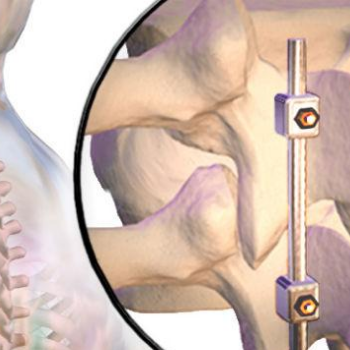
Postoperative Care for Spinal Fusion Surgery
The extended healing period required after lumbar spinal fusion surgery makes postoperative care especially important. While spinal fusion surgery has a high success rate for stabilizing 2 or more adjacent vertebrae and enabling a return to previous normal activity levels, the recovery time can vary based on many factors. These factors include the extent of the surgery, other medical conditions, and how closely the care instructions are followed.
Spinal Fusion Recovery Time
Most people are able to return home from the hospital about 2 to 4 days after lumbar spinal fusion surgery (if there are other people at home). Driving may be resumed a couple weeks after that if off opioid medications. It typically takes about 4 to 6 weeks to return to an office or sedentary job, but it can take 3 months or longer to return to activities that are more physical.
Despite the name of the surgery, the spine is not actually fused during a lumbar spinal fusion procedure. Instead, during the surgery a bone graft or substitute is placed in the spine that facilitates bone growth between the adjacent vertebrae to eventually form one bone, a process that usually takes about 3 to 6 months. The new bone will immobilize the spine at that segment. Screws, cages, plates, and rods may be implanted during surgery to stabilize the area while the bone heals and becomes solid. Some patients also wear a brace during recovery that limits motion.
The bone continues to mature and solidify over 12 to 18 months after the surgery. Many people with a single-level fusion are able to return to all activities even vigorous ones such as weightlifting or construction work—about 6 months after surgery.
Walking and Moving After Spinal Fusion Surgery
Keeping the spine aligned correctly is important after surgery in order to minimize its workload and reduce the risk of disrupting the healing process. Patients work with physical and occupational therapists each day to learn the safest ways to dress, sit, stand, walk, and take part in other activities without putting added stress on the back. Even getting out of bed requires a special technique—known as log-rolling—to avoid twisting the spine.
In some cases, the physical therapist may advise the patient to use a walker for stability. The occupational or physical therapist also helps arrange medical equipment for later use in the person’s home, if needed.
Many people find it helpful to bring sturdy slip-on shoes with them to the hospital, since surgeons and hospital staff encourage patients to get up and walk around as quickly as possible after the surgery.
From : spine-health.com

